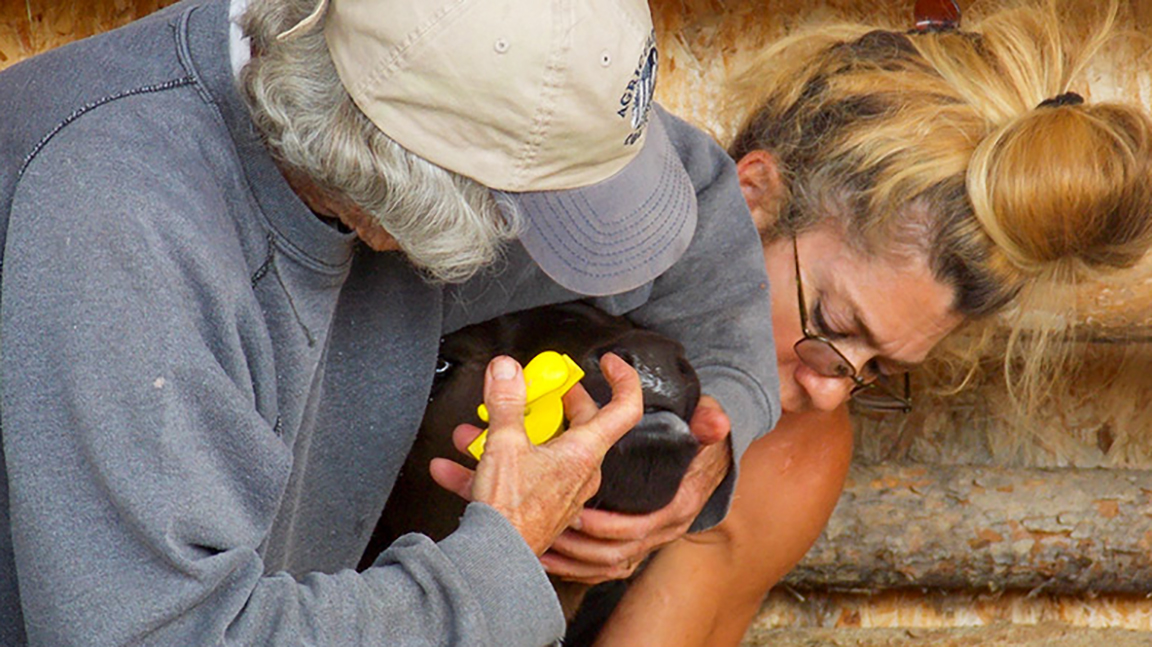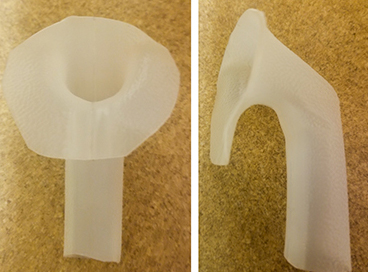Diphtheria in Calves can be Challenging to Treat
Dexamethasone, oxytetracycline and/or Nuflor recommended as treatments for diphtheria calves.
May 4, 2021

Diphtheria is an infection and inflammation of vocal folds of the larynx (voice box) at the back of the throat, making it hard for a calf to breathe. The technical term for this disease is necrotic laryngitis. Swelling can be life-threatening if it shuts off the airway.
Lee Meyring, veterinarian in cow-calf practice near Steamboat Springs, Colo., says the important thing is to identify it early, but many people have a hard time telling the difference between diphtheria and pneumonia. With pneumonia the calf has trouble forcing air out of impaired lungs — taking short breaths and maybe grunting with every forced exhalation.
By contrast, a calf with diphtheria has difficulty drawing air in through the narrowed airway at the larynx. The greatest effort is inhaling. The calf’s head and neck may be extended, trying to get enough air, Meyring explains. Noisy, wheezy breathing can often be heard some distance away.
The affected calf will also be drooling because the throat is swollen and it’s hard to swallow. It may still be bright and alert, because this is not a systemic infection like pneumonia, but it might not be nursing. Even if the calf is hungry, it may stand by its mama fiddling with her teats but not actually nursing because it is difficult to swallow.
“Some years we see more cases. It may be related to weather. It’s the same bacterium that causes foot rot. When it’s wet and muddy and the ground is churned up, the pathogen is more accessible,” says Meyring.

Meyring says you can use the handle of a plastic milk jug to fabricate a tube that fits into the trachea in an emergency when a stainless-steel tracheostomy insert is unavailable.
If calves are eating coarse feeds, nibbling on straw or anything abrasive, scrapes in the lining of the mouth and throat open the way for infection.
Treatment
Early treatment is crucial to minimize damage and scarring in the larynx. Swelling can close the airway, so we use anti-inflammatory medication such as dexamethasone, says Meyring.
In an emergency, a tracheostomy may be necessary, slicing through the windpipe below the larynx (carefully cutting between ribs of cartilage) to create a hole for the calf to breathe through. Your veterinarian may install a stainless-steel tracheostomy insert, to keep the incision open and enable breathing to bypass the swollen, irritated larynx until the swelling goes down and it starts to heal.
If you don’t have access to one of these inserts, Meyring says you can use the handle of a plastic milk jug to fabricate a tube that fits into the trachea.
“I’ve placed this into the windpipe, suturing the plastic to the skin, to hold it for several days,” he says.
Bypassing the larynx allows the calf to breathe through the hole and removes the constant irritation of air being forced past the swollen folds of the larynx with every breath.
Antibiotics are also important. You must keep treating the calf until the infection is gone — which may take two or three weeks in stubborn cases. If you get started too late with treatment, some calves can be hard to save, says Meyring.
“If they have impaired breathing, they can’t keep up with the herd for summer grazing and you have to keep them in a small pen. They are eating and doing OK, but have no endurance — they can’t get enough air for exertion,” Meyring says.
If you don’t treat diligently, or quit too soon, they may relapse and be harder to treat — with a longer course of antibiotics and anti-inflammatory medications.
Any antibiotic that works for foot rot will work for diphtheria — long-lasting oxytetracycline that can be given every few days, for example.
“Nuflor® has been labeled for tough foot rot cases, and I’ve had good luck with it for diphtheria as well,” says Meyring.
“In terms of anti-inflammatory medication, don’t give dexamethasone longer than three days, because it starts to inhibit the immune system, but keep going with antibiotics as long as it takes to get the calf fully recovered. If he’s still having trouble breathing, you might use a little DMSO [(dimethylsulfoxide) mixed with warm water] daily as a drench. DMSO reduces swelling but does not hinder the immune system.”
Editor’s note: Heather Smith Thomas is a freelance writer and cattlewoman from Salmon, Idaho.
Topics: Health
Publication: Angus Beef Bulletin


